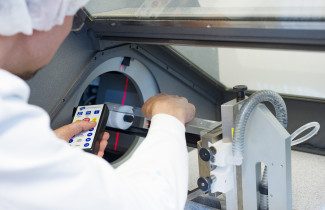The US National Institutes of Health (NIH) has granted funding for the development of a new functional magnetic resonance imaging method (fMRI) for the brain. The new zero echo time fMRI method is considerably less prone to artefacts than the traditional fMRI method. In the future, it will be easier to study changes in, e.g., brain networks during brain stimulation or behaviour and social interaction. Unlike traditional fMRI, the new zero echo time method is not based on blood oxidation level changes during activation.
The project funded by the NIH will investigate the origins of the fMRI signal. The novel method has been developed in collaboration between the Kuopio Biomedical Imaging Unit at the A. I. Virtanen Institute and the Center for Magnetic Resonance Research at the University of Minnesota. The sub-project where fMRI is combined with simultaneous electro-physiological measurements will be carried out in collaboration between the research groups led by Professor Olli Gröhn and Professor Heikki Tanila.
NIH grants are considered to be among the most prestigious international funding instruments, and the now secured R01 grant is one of its most competitive forms. “Being awarded the NIH R01 grant here in Kuopio, together with the recently conferred European infrastructure status, undeniably demonstrates the high international level of imaging at the A. I. Virtanen Institute. We are very excited to be able to develop next-generation imaging technology in this project,” says Olli Gröhn, Director of the Kuopio Biomedical Imaging Unit.
The three-year NIH R01 grant was awarded to the project Next-Generation fMRI with MB-SWIFT: The Insights of the Origins of Contrast. The grant amounts to a total of 1,700,000 US dollars, of which the A. I. Virtanen Institute’s share is 500,000 dollars.




